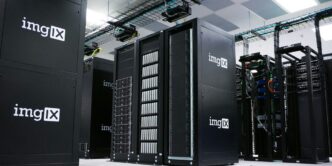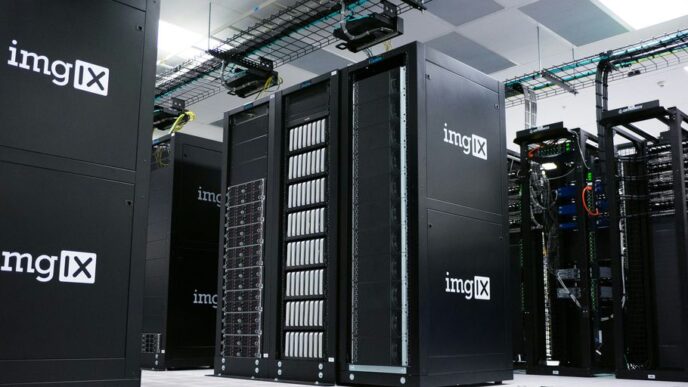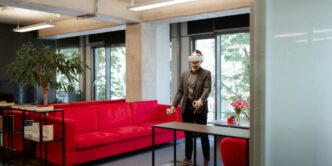The cloud has become an integral part of our daily lives, from storing photos on iCloud to streaming music through Spotify. But have you ever wondered about the different types of cloud computing? In this guide, we will break down the four main categories of cloud computing and help you understand which one is right for your needs. Whether you are a business owner looking to improve efficiency or a casual user wanting to learn more, this guide is for you!
What are the Four Types of Cloud Computing?
Public Cloud Computing
Public cloud computing is a type of cloud computing that delivers services over the Internet. Public clouds are owned and operated by third-party companies that provide their resources on a pay-as-you-go basis.
This type of cloud computing is convenient for users because it doesn’t require any upfront investment in hardware or software. Users can access public cloud resources on demand, and they only pay for what they use.
Public clouds are ideal for businesses that want to avoid the hassle and expense of managing their own IT infrastructure. They’re also a good choice for organizations with fluctuating workloads or limited IT budgets.
The main disadvantage of public clouds is that they’re less secure than private clouds because the data is stored off-site and the provider has control over security measures. Additionally, public clouds can be subject to outages and other service interruptions beyond the control of the user.
Private Cloud Computing
Private cloud computing is a type of cloud computing that involves a single organization. Private clouds can be either internally owned and managed or externally hosted. Internally owned and managed private clouds are usually used by large organizations that have the resources to invest in building and maintaining their own infrastructure. Externally hosted private clouds are usually used by small to medium-sized organizations that do not have the internal resources to build and maintain their own infrastructure.
The main benefits of private cloud computing are increased security and control, as well as improved performance and reliability. Private clouds also offer the flexibility to scale up or down as needed, which can save organizations money on IT costs.
The biggest downside of private cloud computing is that it can be more expensive than other types of cloud computing due to the need to invest in infrastructure and staff. Additionally, private clouds can be complex to set up and manage and may require specialized expertise.
Hybrid Cloud Computing
Hybrid cloud computing is a type of cloud computing that combines on-premises infrastructure—or a private cloud—with a public cloud. A hybrid cloud can help organizations more easily meet their varying needs for agility, scalability, and security.
A hybrid cloud can be used in a number of ways. For example, an organization might use the public cloud for compute resources and storage while keeping its databases on-premises. Or, an organization might use the public cloud for disaster recovery or backup.
First, a hybrid cloud can give you the best of both worlds—the flexibility and scalability of the public cloud with the security and control of the private cloud. Second, a hybrid cloud can help you save money by allowing you to use lower-cost public clouds for non-critical workloads or overflow capacity. A hybrid cloud can make it easier to comply with regulations that require data to be stored on-premises.
If you’re considering using a hybrid cloud, it’s important to choose a provider that offers both public and private options that are compatible with each other. You’ll also want to make sure that your provider has experience managing hybrid clouds—preferably one that has been doing so for several years.
Multi-Cloud Computing
Multi-cloud computing is the use of multiple cloud computing services to create a single, integrated IT environment. Multi-cloud computing can be used to create a private, public, or hybrid cloud.
A multi-cloud strategy can help organizations avoid vendor lock-in, increase flexibility, and improve resilience. It can also help organizations save money by allowing them to take advantage of different pricing models from different providers.
Multi-cloud computing is not without its challenges. One challenge is managing multiple cloud environments. Another challenge is ensuring compatibility between different cloud platforms.
Benefits of Cloud Computing
Cloud computing has become a popular way for businesses to access technology services. The cloud is a network of remote servers that allow users to store, manage, and process data. There are four main types of cloud computing: public, private, hybrid, and multicloud.
Public cloud services are provided by third-party providers and can be accessed over the internet. Private clouds are owned and operated by a single organization. Hybrid clouds combine elements of both public and private clouds. Multicloud environments use two or more cloud services from different providers.
Each type of cloud computing has its own advantages and disadvantages. Public clouds are often the most cost-effective option, but they may not offer the same level of security as private clouds. Private clouds can provide greater control and security, but they may be more expensive. Hybrid clouds offer a good compromise between price and performance. Multicloud environments can be complex to manage, but they offer the greatest flexibility.
Businesses should carefully consider their needs before choosing a type of cloud computing. Public clouds are typically the best option for small businesses or businesses with limited budgets. Private clouds may be a better choice for large businesses or businesses with sensitive data. Hybrid clouds can be a good fit for companies that want to use multiple cloud services. Multicloud environments can be beneficial for businesses that need to use multiple applications or store data in multiple locations.
Potential Disadvantages of Using the Cloud
There are a few potential disadvantages to using the cloud that businesses should be aware of. One is that data breaches are more common with cloud computing. This is because data is stored off-site and often in a shared environment, making it more vulnerable to attack. In addition, companies that use the cloud can be subject to service outages if their provider has technical difficulties. And finally, companies may have less control over their data when it is stored in the cloud as opposed to on-premises.
Conclusion
Cloud computing is an incredibly important part of the modern business world, and understanding the four different types of cloud computing can help you make better decisions when it comes to your own company’s technology. We hope that this article has provided a helpful overview of what each type of cloud computing offers so that you can determine which one best suits your needs. As always, if you have any questions about the various types of cloud computing or want more information on how they might be beneficial for your business, don’t hesitate to reach out to us.













